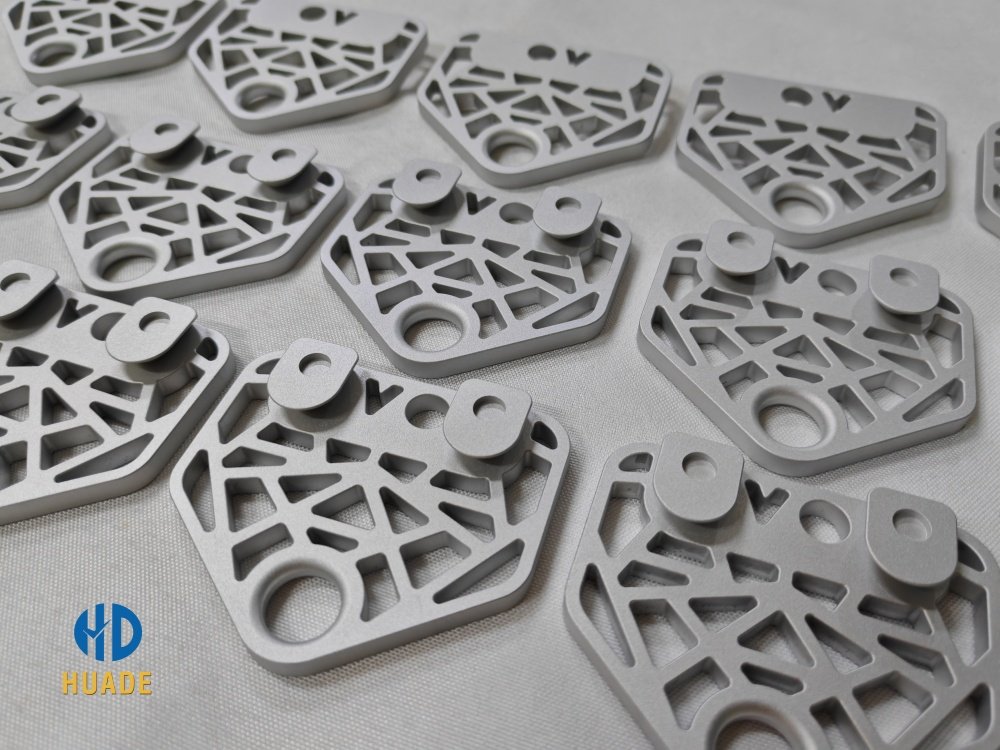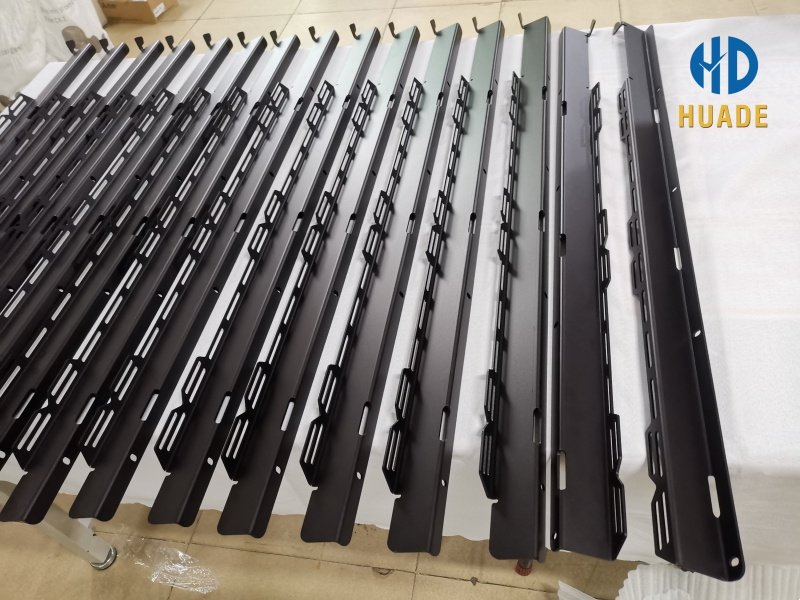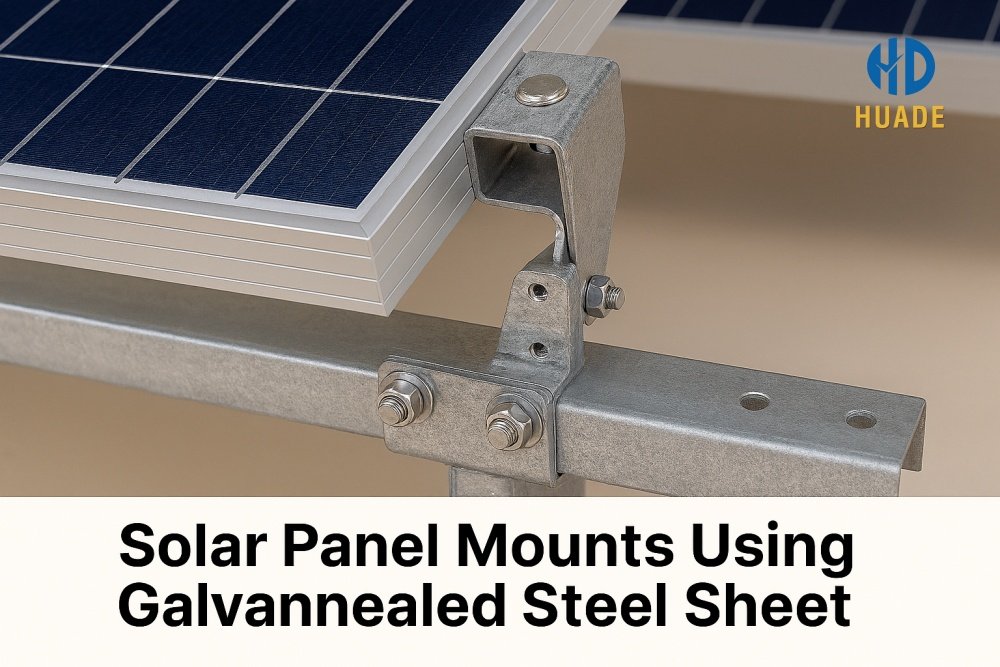Why Sheet Metal Matters in the Energy Industry
The energy industry is undergoing rapid transformation, driven by the global push toward sustainability, efficiency, and resilience. Whether it’s solar panels, wind turbines, battery enclosures, or oil and gas infrastructure, the materials used in these systems must meet demanding criteria: corrosion resistance, mechanical strength, thermal stability, and long-term durability. This is where energy industry sheet metal becomes indispensable.
Sheet metal components—especially those made from forged aluminium, galvannealed steel sheet, and aluminum swiss screw machined parts—play a critical role in ensuring that energy systems operate reliably under harsh environmental conditions. From structural supports to precision connectors, sheet metal is the backbone of modern energy infrastructure.

Common Materials in Energy Industry Sheet Metal
Forged Aluminium: Lightweight Strength for High-Performance Applications
Forged aluminium is a standout material in the energy sector due to its excellent strength-to-weight ratio, corrosion resistance, and machinability. The forging process aligns the metal’s grain structure, enhancing its mechanical properties and making it ideal for structural components in wind turbines, solar panel mounts, and battery enclosures.
Key benefits of forged aluminium in energy industry sheet metal include:
- High tensile strength: Suitable for load-bearing applications.
- Corrosion resistance: Performs well in outdoor and marine environments.
- Thermal conductivity: Useful in heat dissipation for battery systems.
- Machinability: Ideal for CNC machining and precision parts.
Forged aluminium is often used in conjunction with aluminum swiss screw machined parts, especially in systems requiring tight tolerances and complex geometries.
Galvannealed Steel Sheet: Durable and Paint-Friendly
Galvannealed steel sheet is another essential material in energy industry sheet metal applications. It is produced by hot-dipping steel in zinc and then annealing it to form a zinc-iron alloy coating. This process results in a surface that is both corrosion-resistant and highly compatible with paint and coatings.
Advantages of galvannealed steel sheet include:
- Excellent corrosion resistance: Ideal for outdoor installations.
- Superior paint adhesion: Reduces maintenance and improves aesthetics.
- High strength: Suitable for structural components.
- Cost-effectiveness: Offers durability at a competitive price.
Galvannealed steel sheet is commonly used in oil and gas enclosures, solar panel frames, and wind turbine housings.
Material Comparison Table
Here’s a quick comparison of forged aluminium and galvannealed steel sheet across key attributes relevant to energy industry sheet metal:
| Attribute | Forged Aluminium | Galvannealed Steel Sheet |
|---|---|---|
| Corrosion Resistance | Good | Very Good |
| Strength-to-Weight Ratio | High | Moderate |
| Machinability | Excellent | Good |
| Cost | Higher | Lower |
This table helps engineers and procurement teams quickly assess which material best suits their specific energy application needs.
Precision Components: The Role of Aluminum Swiss Screw Machined Parts
In energy systems, precision is paramount. Aluminum swiss screw machined parts are manufactured using Swiss-type CNC lathes, which are capable of producing extremely accurate and intricate components. These parts are often used in electrical connectors, sensor housings, and mechanical linkages within energy equipment.
Why aluminum swiss screw machined parts matter:
- High precision: Tolerances as tight as ±0.005 mm.
- Smooth surface finish: Ideal for sealing and electrical contact.
- Material versatility: Often made from forged aluminium for added strength.
- Scalability: Suitable for high-volume production.
These parts complement larger sheet metal assemblies, ensuring that energy systems function reliably and efficiently.
Manufacturing Processes for Energy Industry Sheet Metal
Sheet Metal Forming: Shaping the Backbone of Energy Systems
Forming processes such as stamping, bending, and deep drawing are fundamental to creating energy industry sheet metal components. These techniques allow manufacturers to produce complex shapes with high repeatability and minimal waste.

Applications include:
- Solar panel brackets: Formed from forged aluminium or galvannealed steel sheet.
- Battery enclosures: Require precise bends and structural integrity.
- Wind turbine components: Large-scale sheet metal parts formed for aerodynamic performance.
Forming is especially effective when working with galvannealed steel sheet due to its ductility and surface properties.
Welding and Joining: Ensuring Structural Integrity
Welding is a critical process in assembling sheet metal components for the energy industry. Techniques such as MIG, TIG, and laser welding are commonly used, depending on the material and application.
Considerations for welding energy industry sheet metal:
- Forged aluminium: Requires careful heat control to prevent warping.
- Galvannealed steel sheet: Zinc coating can affect weld quality; proper ventilation and technique are essential.
- Aluminum swiss screw machined parts: Often joined using mechanical fasteners or low-heat welding methods.
Proper welding ensures that sheet metal assemblies can withstand mechanical stress and environmental exposure.
Surface Treatments: Enhancing Durability and Performance
Surface treatments are essential for extending the lifespan of energy industry sheet metal components. Common treatments include anodizing, powder coating, and electroplating.
Benefits of surface treatments:
- Corrosion resistance: Especially important for outdoor and marine applications.
- Aesthetic appeal: Improves visual integration with energy systems.
- Electrical insulation: Critical for battery and solar applications.
Forged aluminium is often anodized for enhanced corrosion resistance, while galvannealed steel sheet benefits from powder coating for added durability.
Real-World Applications of Sheet Metal in the Energy Sector
Wind Energy: Structural and Precision Components
Wind turbines require robust structural components and precise mechanical parts. Forged aluminium is used in turbine blades and support structures, while galvannealed steel sheet forms the outer housings and control cabinets. Aluminum swiss screw machined parts are used in sensor mounts and electrical connectors.

Solar Energy: Lightweight and Corrosion-Resistant Materials
Solar panel systems benefit from lightweight materials like forged aluminium for mounting structures. Galvannealed steel sheet is used in junction boxes and inverter housings. Precision parts ensure reliable electrical connections and system integrity.
Battery and Energy Storage: Precision and Thermal Management
Battery enclosures demand materials with excellent thermal conductivity and precision. Forged aluminium and aluminum swiss screw machined parts are ideal for these applications. Galvannealed steel sheet provides structural support and electromagnetic shielding.
Oil and Gas: Rugged and Corrosion-Resistant Components
In the oil and gas sector, galvannealed steel sheet is widely used for enclosures and protective housings. Forged aluminium is employed in high-pressure connectors and structural supports. Precision machined parts ensure reliable operation in harsh environments.
Challenges and Considerations in Sheet Metal Selection
Choosing the right sheet metal for energy applications involves balancing multiple factors:
- Environmental exposure: Corrosion resistance is crucial.
- Mechanical stress: Strength and fatigue resistance must be considered.
- Thermal performance: Important for battery and solar systems.
- Cost and scalability: Materials must be economically viable for large-scale deployment.
By understanding the properties of forged aluminium, galvannealed steel sheet, and aluminum swiss screw machined parts, engineers can make informed decisions that enhance system reliability and performance.
Conclusion: Sheet Metal as a Strategic Asset in the Energy Industry
As the energy industry continues to evolve, the importance of high-performance sheet metal components cannot be overstated. From structural supports to precision connectors, materials like forged aluminium, galvannealed steel sheet, and aluminum swiss screw machined parts are essential for building resilient, efficient, and sustainable energy systems.
At Dongguan Huade Precision Manufacturing Co., Ltd., we specialize in producing high-quality CNC machined sheet metal components tailored to the unique demands of the energy sector. Our expertise in material selection, precision machining, and surface treatment ensures that your energy systems are built to last.
